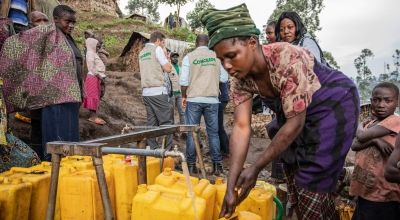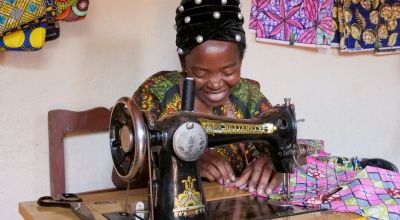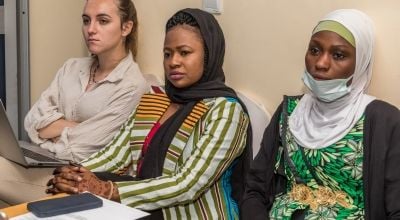
Knowledge Hub
The cause of why some communities are poorer than others is heavily debated, with numerous philosophers, economists and politicians devising their own theories and approaches towards poverty.
On an individual level, we know that for many, escaping poverty can be a near insurmountable task, with the outcome that most do not leave poverty, and entire families are hindered from advancing economically and socially.
We wanted to explore the term ‘poverty trap’ and provide insight into why some people stay poor despite their best efforts.
Quick facts about poverty
- According to the United Nations Development Programme 1.1 billion people can be classed as poor
- 485 million poor people live in severe poverty
- Sub-Saharan Africa accounts for around half of these (534 million), while South Asia accounts for some (389 million)
Definition of the poverty trap
The poverty trap is defined as a societal and economic condition in which people struggle to escape poverty and financial insecurity. Escaping poverty requires tremendous effort and resources, and when those resources are unavailable to people, it enables a system whereby people become trapped within poverty.

Cause of the poverty trap
At Concern Worldwide, we recognise two primary causes of extreme poverty: namely risk and vulnerability; and inequality.
Risk and vulnerability refer to the susceptibility of communities to disastrous events and conditions like conflict, disease, natural disasters, and famine. Often extreme poverty walks hand in hand with these risks. For example, the Republic of Sudan is experiencing a severe humanitarian crisis primarily stemming from years of civil and political unrest. This has resulted in food production being hit, leading to millions of people facing acute food shortages.
Risk does not only come in the form of conflict. Another example is found in countries vulnerable to climate change, which often experience higher levels of poverty and instability as a result.
Inequality refers to the differences in opportunities concerning education, employment, or the discrimination and exclusion certain peoples face. Again, inequality often goes together with poverty.
When we examine the inequality aspect, we can also see how this feeds into the poverty trap. This view starts with the position that people who are born poor and with fewer resources and opportunities, in comparison to those who are not poor, must prioritise immediate survival. As opposed to exploring education, entrepreneurialism, and longer-term career opportunities.
For a person living through famine, conflict, and extreme hunger, they are presented with numerous challenges to advance economically and socially. The effort required to escape this level of poverty without support is enormous. As a result extreme poverty in these circumstances becomes further entrenched, passing down through generations of families.

Countries most impacted by the poverty trap
As we’ve mentioned before, what determines the world’s poorest countries or country most impact by poverty isn’t clear-cut, as poverty is a multi-dimensional concept. There are several countries that stand out as being far more particularly affected by extreme poverty and caught in a prolonged poverty trap than others. Below are a few examples of the poverty trap and its impacts in several countries.
Burundi
The World Bank describes the economic condition of Burundi as being “marred by a fragility trap, with entrenched poverty.” In Burundi, roughly 75% of its population live below the poverty line. Burundians unfortunately experience an economic landscape that is beset by low productivity, dependence on foreign aid and inadequate infrastructure.
Additionally, Burundi has suffered from years of civil war and violence. More than 50% of people in Burundi don’t have enough to eat. In Cibitoke, northwest Burundi, every other child is chronically malnourished, children are trapped within poverty as malnourishment impacts their ability to grow and learn, which stunts their health and hinders their chances of progressing academically. This further entrenches them in the cycle of poverty.

South Sudan
South Sudan is considered one of the poorest countries, with the United Nation’s 2023-24 Human Development Index (HDI) ranking Sudan at 192 out of 193 countries for acute poverty and poor living standards. South Sudan has had to contend with droughts, floods, as well as civil war and political instability.
In South Sudan, more than 70% of the adult population is illiterate, which negatively affects people’s life chances of finding employment, creating sustainable and profitable businesses and embedding a lack of social mobility.
Afghanistan
After decades of conflict, food insecurity and natural disasters, Afghanistan remains one of the most vulnerable countries in the world. Many people in Afghanistan suffer from a lack of education, limited economic and career resources as well as a lack of access to basic services.
Additionally, Afghanistan has one of the lowest literacy rates in the world, with illiteracy particularly impacting women, with only 23% of women being able to read. Gender discrimination is rife in Afghanistan, women and girls are heavily reliant on men, with millions being cut off from aid supplies, schooling, and lack of access to basic services. When one half of population lacks education alleviating poverty becomes more difficult.

Breaking the poverty trap
Dismantling the poverty trap is not impossible with the right resources. A joint study from the London School of Economics and Massachusetts Institute of Technology, alongside BRAC, a major NGO in Bangladesh, proves that the poverty trap can be overcome.
For context, although Bangladesh has made progress in poverty reduction, extreme poverty exists in large pockets, such as city slums and in remote communities. Moreover, extreme poverty in Bangladesh has exasperated by climate change.
In the study, titled, ‘Why Do People Stay Poor?’, over 23,000 households across 1,309 villages in rural Bangladesh were analysed on their wealth, resources and lifetime opportunities. The study looked at several groups, including 6,000 poor rural households, in which women in half of those households were offered a one-time asset transfer of about $500 USD alongside training and support in 2007, while the rest served as a control group. Four years, after the original transfer, this study demonstrated observable evidence of the poverty trap.
The group who received a transfer were able to accumulate 14% more assets, which put them on the path towards alleviating poverty. However, groups which did receive transfers had lost, on average 16% of their asset value. Additionally, some of the women who received a cow instead, increased their earnings by 37% with extreme poverty (those living on under $1.25 per day) declining 15% compared to the control group.
Receiving assets such as a cow even opened career and business opportunities for members of low-income households, with many moving from being under-employed labourers to working with livestock and in land cultivation.
This study is invaluable in dispelling ideas of laziness, intelligence, and other concepts of intrinsic difference between the poor and more well-off. It demonstrates that once provided with means to move out of the poverty trap, people do tend to seek to improve their lives.

How Concern works to end poverty
We’ve previously spoken about the importance of financial inclusion interventions in providing a pathway out of extreme poverty. Here at Concern, cash transfers are an important part of how we respond to humanitarian crises. Once a cash distribution system has been put in place following a crisis, funds can be freed and can reach thousands of people, which also has the added effect of allowing impacted people to purchase essential goods or services from their local economy.
Concern also makes use of microfinance initiatives to alleviate poverty. Our Village Savings and Loans Associations (VSLAs) and Community Based Savings Groups (CBSGs) are an important tool of ours in reducing poverty in a community by allowing individuals to have access to loans and savings groups which drive economic self-determination.
In Rwanda, we have made immense strides in ending poverty through our groundbreaking Graduation Programme, which aims to provide business and vocational training to enable people to earn a living to sustain their families.
Our financial education programmes look to build resiliency and boosting financial outcomes for poor and marginalised people living in extreme poverty. Take a closer look at Concern’s education programmes here to find out more.






